5 Surprising Facts About The First Galaxies In The Universe
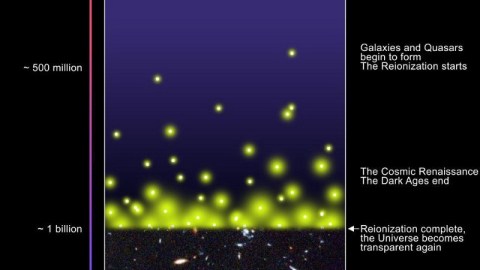
Even though we’ve never seen them, here’s what we already know.
“Suddenly whole new programs open up, things you can do that you could never do before. It’d be great scientifically, it’d be great for the nation, for educators, for students, and it’d be just great for the public at large.”
–Garth Illingworth
One of the most remarkable facts about our Universe is that it hasn’t been around forever. The clumps and clusters of matter we see — planets, stars, gas clouds, galaxies and more — grew out of smaller bits of matter that have gravitationally grown and merged over time. If we look to objects at greater and greater distances, the light from them takes longer to reach our eyes, meaning that the light arriving today was emitted millions or even billions of years ago. As we look back in space, we’re also looking back in time. At some point, we’ll reach a distance so great that there were no stars or galaxies back then. Although it will take the James Webb Space Telescope to view those very first galaxies, there are five surprising facts we already know must be true about these most distant objects of all.
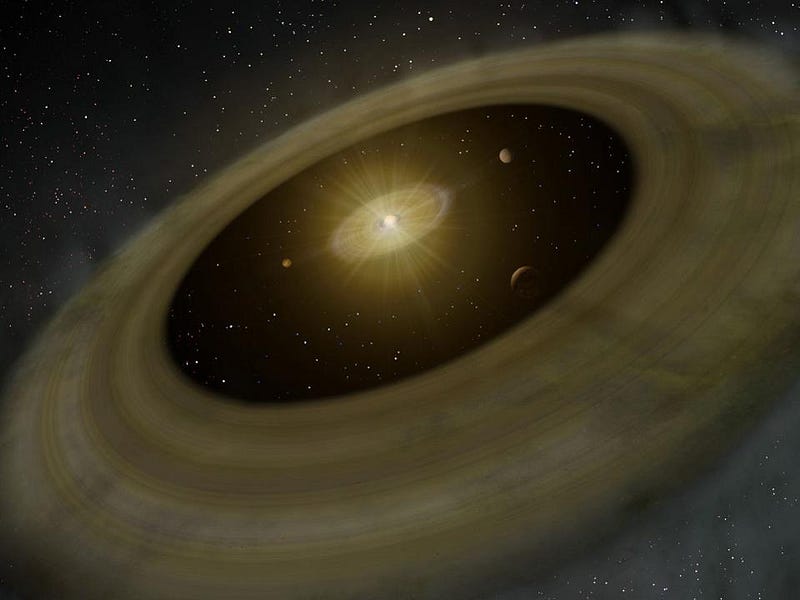
1.) There are no rocky planets present among the very first stars and galaxies. Whenever you form stars from a molecular cloud of gas, you can fully expect that gas to fragment into a whole slew of clumps, which grow at different rates depending on how large they are to begin with and what else is in their vicinity. Large gas clouds will grow stars and planets of many different sizes, but even the smallest worlds that first form will be made exclusively of gas: hydrogen and helium. Without any previous generations of stars, there are no heavier elements to form solid bodies like rocky planets or moons. Small balls of gas may form, but when those stars ignite, they’ll simply be burned off into interstellar space by the ionizing radiation of those first nuclear fires in the Universe.
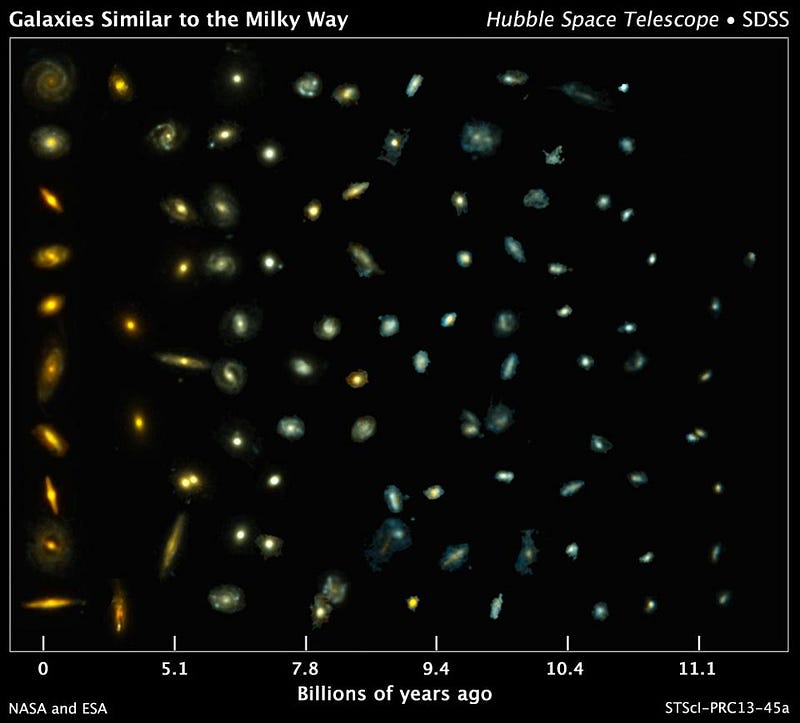
2.) The earliest galaxies are tiny compared to the ones we have today. When the first neutral atoms in the Universe form, they’re already clumped together, ever so slightly, into overdense and underdense regions of a particular size. Containing anywhere from a few hundred thousand to a few million solar masses, these will form the seeds of the first star clusters. Over perhaps 50-to-200 million years, gravitation causes these first gas clouds to collapse and form the very first stars. When star clusters begin to gravitationally merge together, rapid star-formation ensues, and it’s at that point we can start to say that we’ve formed the Universe’s first galaxies. Even though they may be only a tiny fraction of the Milky Way’s mass, perhaps 0.001% as massive as we are, these are, in fact, galaxies in their own right, containing stars, star clusters, planets, gas, dust, and even halos of dark matter.
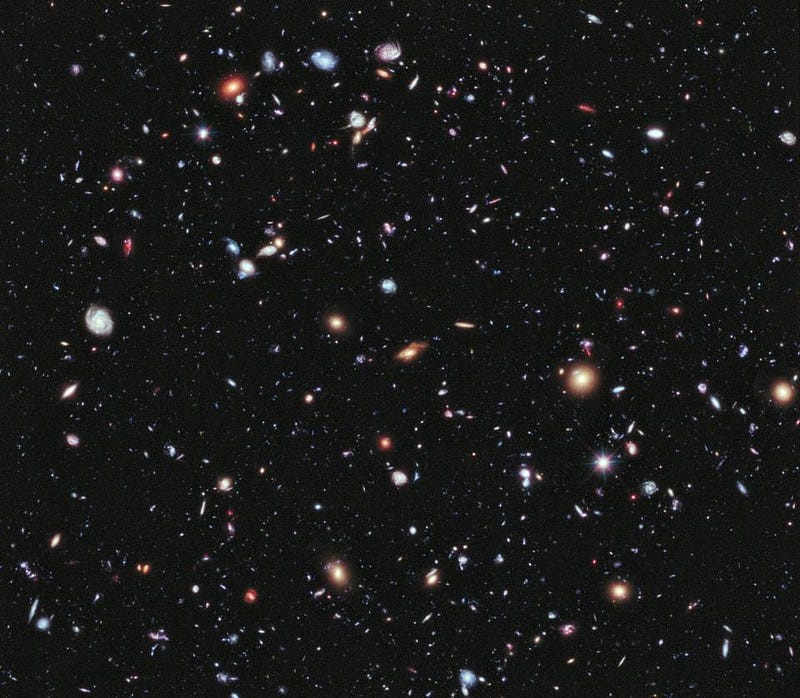
3.) Even if Hubble were to look at the distant Universe forever, it would never see these first galaxies. The light these galaxies emit ought to be similar to the light emitted by newly star-forming galaxies today. When a galaxy first forms, it should be full of hot, bright, short-lived blue stars that dominate the luminosity of all the others. But unlike nearby galaxies, the light from these earliest ones requires a tremendous cosmic journey — one that takes over 13 billion years from our perspective — to reach our eyes. During this time, the Universe is expanding, causing the wavelength of this initially ultraviolet light to redshift through the visible, through the near-infrared and into the mid-infrared portion of the spectrum. Even if Hubble, which can view light quite far into the near-infrared, viewed the sky forever, it would never be able to detect galaxies out to a redshift of 15-to-25, where the first ones are expected to lie. For that, we need James Webb.
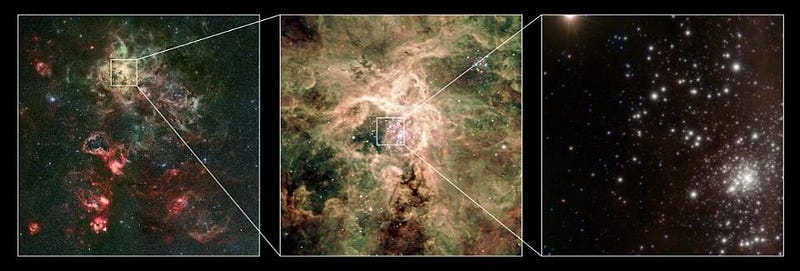
4.) The most massive stars in the Universe only existed at these earliest of times. Today, if we look deep inside an ultramassive star-forming region, we expect to find the brightest, most luminous, and most massive stars of all. The largest one in our local group, the Tarantula Nebula (above) in a satellite galaxy of the Milky Way, contains many hundreds of thousands of solar masses’ worth of material, along with the most massive star known: R136a1. At around 260 times the mass of our Sun, it’s the most massive star ever discovered. But it’s also loaded with elements rising high up the periodic table, much like our own Sun, which suppresses the initial growth of massive stars. Since they were made of pristine hydrogen and helium alone, the very first stars lacked that suppression, and were able to grow to even greater masses. How big did they get? 500 times as massive as the Sun? 1,000 times? 2,000 times? With a little luck, James Webb will teach us the answer.
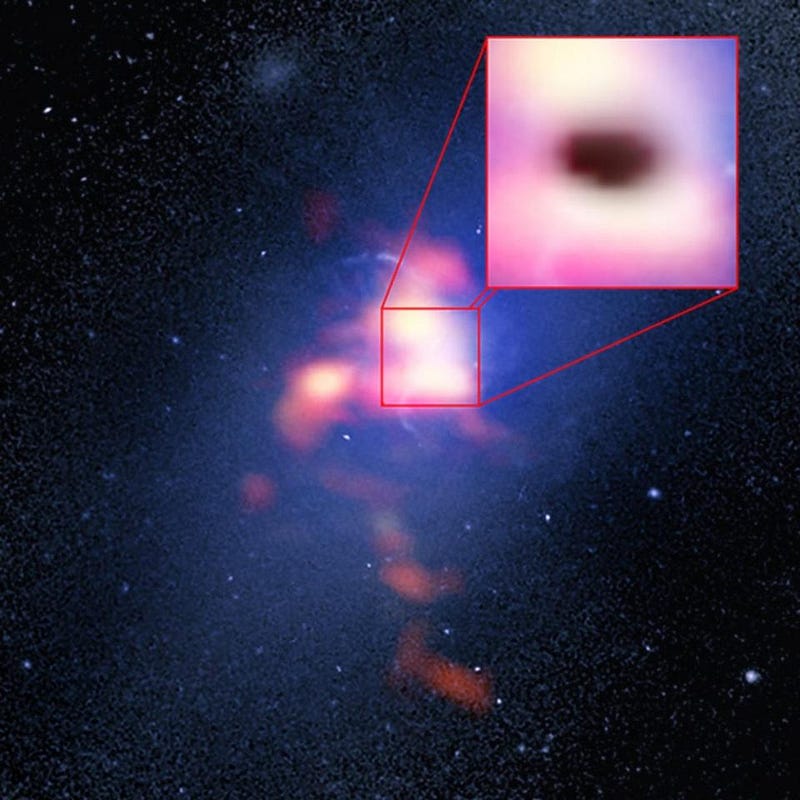
5.) The first supermassive black holes should come to exist inside these first galaxies from almost the moment of their birth. Paradoxically, the more massive a star is, the shorter its lifespan will be. The most massive stars of all live only a few million years before either going supernova or directly collapsing; in either case, they produce massive black holes. These black holes quickly migrate to the center of galaxies, where they merge together and accrete matter, becoming the seeds of the supermassive black holes we see today. These earliest galaxies, even when they first become visible, may contain black holes many hundreds of thousands or even millions of times as massive as our Sun, comparable to the four-million-solar-mass one present at the Milky Way’s center. These objects must be there, and James Webb just might show us how massive they truly are.
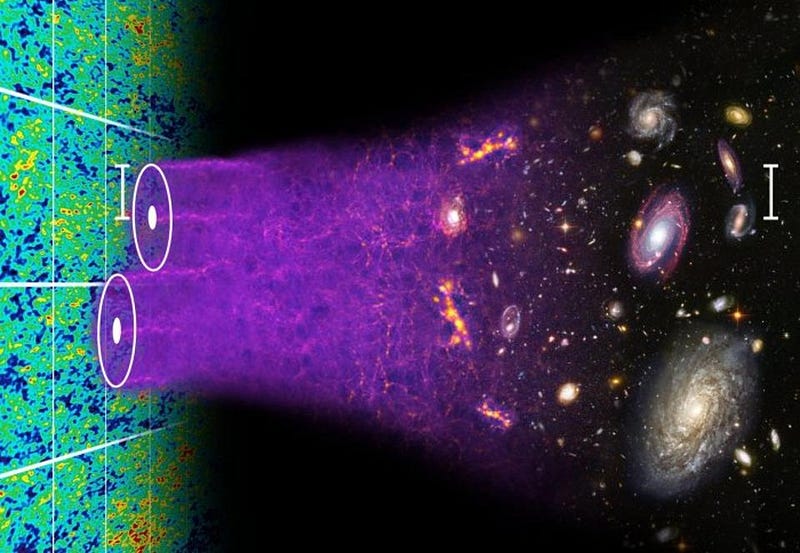
These ultra-distant, ultra-young, and ultra-tiny galaxies don’t remain that way for long, mind you. At some point long ago, every nearby galaxy we see today was not so different from these very first ones we’ll discover starting in just over a year, when James Webb launches and deploys. The first ones to form have gravitationally grown the fastest, and so by time they’re 13.8 billion years old, they’ll have attracted more and more matter, and themselves will likely be giant spirals or ellipticals in their own groups and clusters, much like we are. But we have no way of knowing, at present, what our own Milky Way’s past was like in any sort of detail. After all, the great crime of the Universe is that we can only see it today, at one particular instant in time. Despite the entire cosmic history of what’s occurred, when it comes to where we are now, the only things we know are the survivors.
Ethan Siegel is the author of Beyond the Galaxy and Treknology. You can pre-order his third book, currently in development: the Encyclopaedia Cosmologica.





